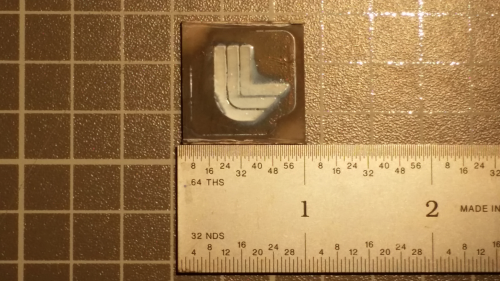
For nearly a century, EPD has been used as a method of coating material by depositing particles of various substances onto the surfaces of various manufactured items. One of the most common and processes is the application of a primer coat to new car bodies on a production assembly line. It can also deposit a wide range of materials onto surfaces, including ceramics, metals, polymers and even living cells, but until now it has only been possible to deposit material across the entire surface and not in specific places, the researchers say.
Using photoconductive electrodes and DC electrical fields allows the build up of material in targeted areas where the light comes in contact with the photoconductor's surface. This enables the creation of arbitrarily patterned 3D multimaterial composites over large areas with fine resolution.
The Lawrence Livermore National Laboratory researchers used light-directed EPD to produce an alumina ceramic-tungsten nanoparticle composite. Initially, the tungsten nanoparticles were deposited across the photoconductive surface, then illuminated through a laser cut aluminium mask. A different shaped mask was then substituted along with the new material, to deposit the ceramic material. In the future, the aluminium masks will be replaced by a digitally projected mask, similar to those found in DLP televisions, for a completely automated deposition system.
Using light
Light-directed electrophoretic deposition has the potential to elevate traditional EPD from a single layer, single material coating process to a true additive manufacturing technique that allows for unique composites to be formed. For example, void areas can be precisely created in a part to control polymer material behaviors for energy absorption or within cellular material for the creation of veins or blood vessels for manufactured organs.
"We have presented a novel electrophoretic deposition technique based on using light to pattern materials on a photoconductive layer,” said Andrew Pascall, research engineer and lead author. “This represents a large step in advancing electrophoretic deposition as a method of fabricating complex 3D patterned composites.”
The research is the subject of a paper, Light-Directed Electrophoretic Deposition: A New Additive Manufacturing Technique for Arbitrarily Patterned 3D Composites, published in Advanced Materials.





